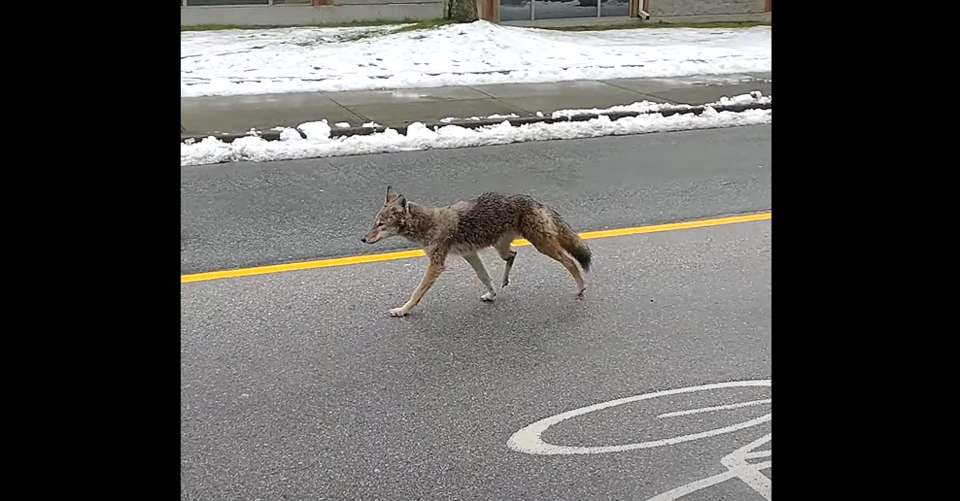Young Kip has quickly become a notable resident of the UBC campus.
Born in 2020 at or near the campus, Kip, a juvenile coyote of undetermined sex, suffered an injury sometime over the past year to its back right leg, leaving it unusable for walking or running.
However, that hasn't hampered Kip's hunting or life around the university.
“The consensus is to let the animal be and monitor (through trail camera footage or incidental sightings). The coyote is highly mobile, has been seen actively hunting (squirrels and voles) and capturing prey on dozens of occasions, and is in overall good body condition. Kip is also occasionally seen with other members from its pack,” says UBC researcher Dr. Kristen Walker in a media release.
While some may want to help the three-legged coyote, Walker says the best thing to do is treat Kip as any other coyote.
"Based on reports of this coyote's behaviour, it keeps its distance from people and does not show habituation or dependence on humans," Walker says. "To maintain this healthy boundary, community members are asked to ‘haze’ this or other coyotes when seen."
To 'haze' a coyote is to essentially scare the canine in a humane way by looking big, scary and loud. It's important to also leave an easy route for Kip or any other coyote to leave. Other things you can do include quickly and suddenly opening an umbrella or throw rocks near it (but not at it).
Walker and her students are monitoring Kip, and other wildlife experts and organizations have been consulted about the young coyote's condition.
UBC is asking people who spot Kip around the area to report their sighting to Walker via email at [email protected].
They're also reminding people not to approach coyotes, to keep their pets on a leash while walking around the campus and not to feed Kip or any other coyotes (this can make them dependent on humans). It's also good to remember they're very agile.




